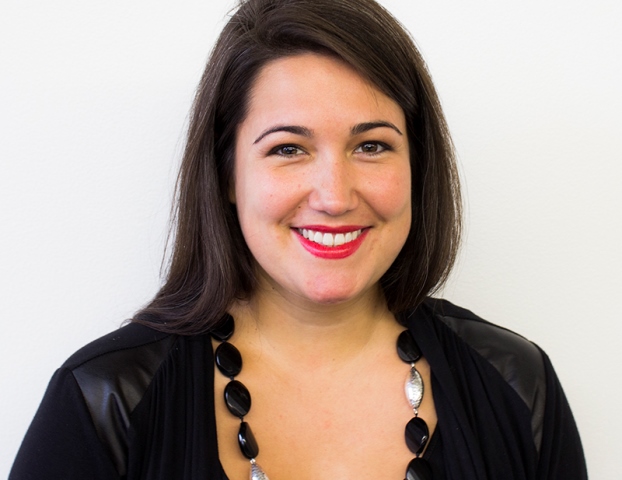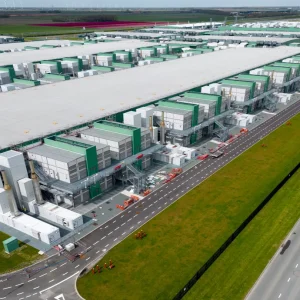
To derive true business value and return on investment in terms of more effective integrated marketing and higher sales from SAAS software investments presents unique challenges. A whole cadre of companies has sprung up to serve Salesforce and Salesforce users.
Since the Salesforce Sales Cloud and its CRM solution have achieved global dominance the company has launched marketing, community, service, analytics and other clouds such as the IOT cloud it has relied on partners to keep clients fully engaged and re-subscribing.
In the latest of the series of interviews with Salesforce Ecosystem stakeholders I spoke with Vera Loftis, UK MD at Salesforce consultancy Bluewolf.
Bluewolf is a $100m privately held consultancy. The firm has plans to double in size by 2018 (30% in 2016, 40-50% in 2017 and 50% again in 2018 with a target 25% of its business to come from outside the US in the same timeframe.
It has undergone its own restructuring to put the processes and tools in place to be a software and consultancy firm at scale.
CBR: Where does Bluewolf fit inside the Salesforce Ecosystem?
Vera Loftis, UK MD, Bluewolf: It is a challenging question because it changes so often with so many acquisitions (by Salesforce and its partners). Bluewolf sits at an intersection between local market specialities and knowledge and the management consultancies. Look at Deloitte or Accenture, in large part they are accounting firms or management firms that are looking to get into the IT space. And use IT as a value-add service. Bluewolf has always been about technology and been specifically Salesforce focused. We bridge how to look at technology projects and shape business outcomes around them."
Loftis describes the Bluewolf approach as being to avoid implementing specific pieces of Salesforce technology for the sake of it. But, instead, the idea is to navigate the line of what the business is trying to achieve and how the technology can provide the platform for achieving this without getting into a structured waterfall projects that will take three years to deliver.
CBR: As SF evolves from SAAS to platform – where is the Bluewolf value add?
VL: There are a couple of components. As the platform advances it becomes a very complex ecosystem and for a customer it is really difficult to navigate. What am I buying? What purpose does it serve? I [the customer] buy into the concept of Salesforce and all of a sudden that opens me up to thousands of apps that I may or not need and then I’m confused about how I differentiate between those choices. And that’s where Bluewolf starts the journey with the customer. They know there is some type of transformation and they know there is some type of technology that will enable that. But there is a little bit of confusion about what that technology looks like and how they are actually going to see ROI behind it. What is it going to take to implement that and what are all the components. What is the TCO? The customers buys cloud technologies because the assumption is they are flexible, and you can continue to evolve them. But I do think this is something a lot of customers struggle with, how do I structure an internal team, to maintain it. How do I budget for innovation? How quickly am I supposed to be changing these things?
What’s the long term strategy for getting value add from subscription based services. Once you buy in, have the kick-off party and it is all very ‘Ra-Ra,’ then six months later people don’t have the same enthusiasm. But how do you keep that momentum going because guess what, you’re still paying the same amount."
The methodology is to use a feedback mechanism inside the Salesforce platform which works to a methodology based on annualised strategic outcomes. Says Loftis, most people assume they will engage Salesforce and hire 2 or 3 developers and an admin and go from there. But in a complex environment paying for specialised resources such as technical architects can be cost prohibitive.
CBR: What’s your view on the pace at which Salesforce brings things to market?
VL: That’s one of the challenges for customers in a particular space, whether its marketing automation, CPQ or service. For example a customer might think, I know there are five partners. Salesforce is working on something and there is an inkling of an acquisition. How do I make a buying decision now that I could potentially regret in two years. The space changes and it changes so often, that’s why companies use Bluewolf to give a realistic picture of where the product is today and where it is going.
CBR: How are the big investment decisions made within Bluewolf?
VL: Multiple factors lead to investments in certain areas. There is Bluewolf holistically and there is Bluewolf regionally. Conversations happen early with Salesforce and you do get some insight to where they are putting their resources, where they are putting their investment, and that gives you a good inclination of where to put your efforts. We have an analytics practice, a marketing practice, a communities practice. It is a little bit of a breeding ground and they evolve as quickly or slowly as necessary."

CBR: How for example has marketing cloud developed and has it grown as quickly as expected? How much of that is down to the partners?
VL: We have our own P+L. We made a bet two years ago that in the UK we would invest heavily in marketing cloud. We were having strategic conversations, starting with ‘I believe this product is going to be everything you say it will be’, ‘I believe you when you say there is a massive need in the market.’ And ‘Therefore I’m going to hire a head of marketing cloud lead and a team knowing I can service these. Maybe not on the pipeline I have today but assuming that you are going to be a trustworthy partner and we’re going to build this practice together. So when you get agreement, we’re invested, you’re invested and we have to develop this together. As opposed to, yes we have a big push and we think you guys should develop a practice."
CBR: Developing technical architects on salesforce is expensive, with high levels of certification. How does Bluewolf approach it?
VL: It is about the most painful thing to do in my view and it is massively high in terms of technical requirement. When talking about resources, those are big bets to make.
We developed an internal practice called GTM (global talent management.) We’re going to put $1-2m profit back in to the business to develop talent. They [GTM] have metrics on how many technical architects they create, how many practices they can scale over time. They must show value because they are a cost centre and must choose who they target, what training they invest in. On average it costs $60k to create a technical architect and you create an environment which makes them want to stay and give them the next step.
Business growth for a consultancy led business is built upon relationships and, as has been described above, having the right people in place working with the right clients. No business operates in a friction free environment. As Loftis says turning down business because the target is not a great cultural fit is not in most salespeople’s world view. But it is important to avoid the ‘rub’ where you could end up with people who don’t want to work with that client or clients who don’t engage.
CBR: What’s the ethos within BW?
VL: Bluewolf has grown quickly but maintained a familiarity both internally and externally. It is still a business of people who care about making the client successful. What’s important also is picking the right clients. Those who fit the model or fit your methodology.
Bluewolf wants to double business size by 2018. Two years ago we invested in tools and processes required to be a business at scale.
Lot of investment in tools and hiring. So we put training programmes for mass hires to get people in and out in front of clients within 90 days.
The ethos is to keep agile principles of cloud technology but bring in components that are focused on the business outcome.
We’re pure cloud technologists but span the entire customer lifecycle. Whether that’s a marketing, sales or service employee, we would look at streamlining that experience using any technology available.
So if you think about all the Salesforce app exchange applications, marketing automation apps, CPQ apps, financial apps, as you map a process to streamline your business you use the right technology in the right place.






